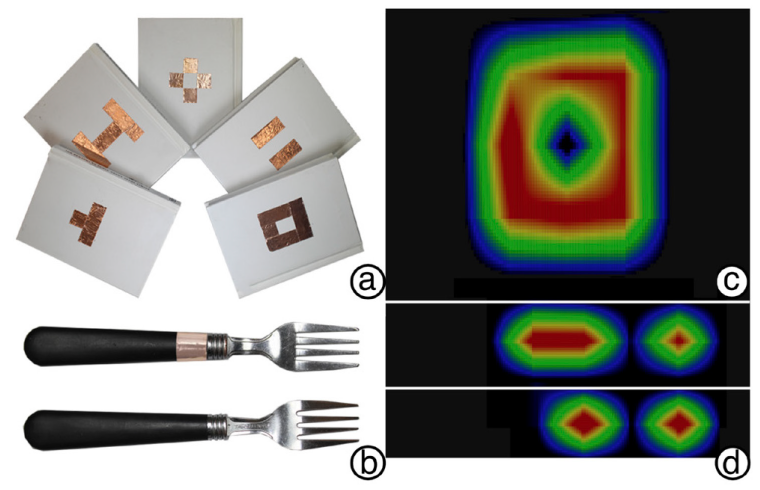Tessutivo: Contextual Interactions on Interactive Fabrics with Inductive Sensing
Jun Gong, Yu Wu, Lei Yan, Teddy Seyed, Xing-Dong Yang ACM Symposium on User Interface Software and Technology (UIST), 2019 [PDF] [Video]
Motivation
Input through interactive textiles have found numerous applications in clothing, fashion, furniture, toys, and even vehicles. Thus, it is foreseeable that objects that are already made or covered by soft and lightweight fabrics may become an important part of daily digital life in the near future. However, with current sensing techniques on interactive fabric, user input is limited to either touch or deformation of the fabric. As a result, opportunities for several new interactions techniques have thus been missed.
In this work, we explore a technique using contact-based inductive sensing for contextual interactions on interactivefabrics. Our technique is based on the precise detection and recognition of conductive objects (mainly metallic) that are commonly found in households and workplaces, such as keys, coins, and electronic devices. Our technique allows a context embedded object to be sensed by the interactive fabric, when the object is in contact with the fabric. Using this information, a desired application can thus be triggered to respond. For example, a sofa is capable of detecting if a user has left their keys on it after they’ve left. An empty tablecloth can remind the user to set up eating utensils before guests arrive for dinner. Aside from object recognition, our technique can also sense the coarse movement of the contact area of the object itself, allowing a new dimension of input to be carried out through gestures.
Sensing Conductive Objects
Tessutivo can differentiate conductive objects that are either environmental or artificial. Environmentally conductive objects are common in everyday life, from the smartphone to the utensils on a dinner table that sit on a table cloth. Artificial conductive objects are those manually instrumented using conductive markers in the object’s contact area (Figure). By identifying the unique pattern of the conductive markers through its inductance footprint, the associated object can be recognized.

Figure. Left: (a) conductive markers created using copper tape. (b) folks with and without instrumentation. Right: (c) heatmap image of inductive footprint of rightmost marker. (d) heatmap images of inductive footprints of the fork and instrumented fork.
Applications
The first application is a hydration tracker, which reminds a user of their daily water consumption when they are working at a desk. Placing a stainless mug (which we use to track) on a tablecloth starts a timer and a reminder is sent to the user’s phone if the mug stays at the desk longer than a pre-set time period (Figure a). The second application relies on a pocket that is instrumented with Tessutivo. The pocket is capable of detecting if a user’s phone has slipped out of the pocket when they have gotten up and left from a sofa (Figure b). Our third application combines the tablecloth and a backpack to provide unobtrusive contextual sensing. For example, when a user wants to read an ebook, they grab a kindle from a table, which causes the nearby floor lamp to switch on. After the user finishes reading and puts the kindle into their backpack, the lamp turns off automatically (Figure c). Finally, our last application is also based on a tablecloth in a dining room. A family meal has been prepared by a mother and father, whom have finished cooking and are preparing the table. As they prepare the table, their children whom are on the second floor receive a message asking them to go downstairs and enjoy the meal (Figure d).

Selected Press Coverage
EurekAlert: Dartmouth lab introduces the next wave of interactive technology